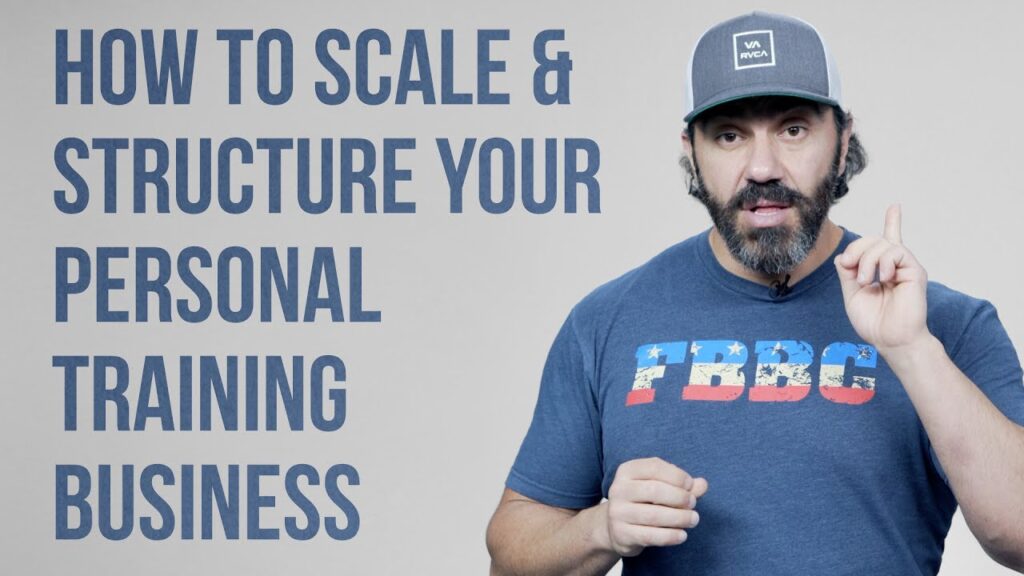The first step in scaling a personal training business is to create a niche market. This can be done by targeting a specific group of people with specific fitness goals. Once you have created your niche market, you need to find a way to reach them.
This can be done through online marketing, word-of-mouth marketing, or even print marketing. Once you have found your target market, you need to create a system that will allow you to train more people in less time. This can be done by creating workout routines that can be done in group settings, hiring additional trainers, or even opening up multiple locations.
By following these steps, you will be able to successfully scale your personal training business.
- Define your ideal clientele and market to them specifically
- Train your current trainers to work with more clients at one time and create packages/bundles for new and existing clients
- Create an online presence for your business through social media and a website
- Use this platform to promote deals and attract new customers
- Expand your services by offering things like nutrition counseling, online training, or corporate wellness programs
- Partner with other businesses in your area to cross-promote and refer customers to each other (for example, a gym could refer its members to you for personal training)
How To Scale & Structure Your Personal Training Business
Personal.Trainer near Me
If you’re looking for a personal trainer near you, there are a few things to keep in mind. First, consider your goals. Are you looking to lose weight, build muscle, or just get in better shape?
Once you know your goals, you can start to narrow down your search for a personal trainer. Next, think about what type of personality you want in a trainer. Do you prefer someone who is motivator and upbeat or someone who is more serious and focused?
There’s no right or wrong answer here, it’s just important that you find someone who meshes well with your personality. Finally, take into account your budget. Personal trainers can range in price depending on their experience and location.
Once you’ve considered all of these factors, you should have no problem finding the perfect personal trainer near you!

Credit: www.totalcoaching.com
How Do You Become a Scalable Personal Trainer?
There is no one-size-fits-all answer to becoming a scalable personal trainer, as the best way to scale your business will vary depending on your individual goals and circumstances. However, there are some common strategies that many successful personal trainers use to grow their businesses. One of the most effective ways to become a scalable personal trainer is to specialize in a particular niche or target market.
By focusing on a specific group of clients, you can more easily create customized programs and services that meet their needs. This allows you to attract more clients within your target market, which can in turn lead to increased revenue. Another key strategy for scaling your personal training business is to build an online presence.
Creating an informative website or blog where you share helpful tips and resources related to fitness and health can help you reach a wider audience of potential clients. Additionally, utilizing social media platforms like Facebook, Twitter, and Instagram can help you connect with even more people who might be interested in working with you. Finally, it’s important to continually invest in your own professional development as a trainer.
Taking courses, attending workshops and conferences, and reading industry publications can help you stay up-to-date on the latest trends and techniques. This ensures that you’re able to provide your clients with the highest quality of service possible – which is essential for keeping them coming back (and referring others) again and again.
What is a Good Profit Margin for Personal Training Business?
If you’re thinking about starting a personal training business, one of the first questions you’ll need to answer is what profit margin you can expect to earn. Unfortunately, there’s no easy answer to this question since it will vary depending on a number of factors, including your overhead costs, the type of services you offer, and the price point you set for your services. With that said, let’s take a look at some of the things you’ll need to consider when determining your profit margin so that you can get an idea of what to expect.
1. Overhead Costs One of the biggest factors that will affect your profit margin is your overhead costs. This includes everything from rent or mortgage payments on your training space to equipment costs and marketing expenses. The lower your overhead costs, the higher your profit margin will be.
2. Type of Services Offered Another factor that will affect your profit margin is the type of services you offer. If you’re just offering basic personal training sessions, your margins will be lower than if you’re offering more comprehensive packages that include things like nutrition counseling and customized workout plans.
3. Price Point Set for Services Finally, the price point you set for your services will also have an impact on your overall profit margin. If you charge too little for your services, you won’t be able to make a Profit; however, if you charge too much, you may have difficulty finding clients willing to pay those rates.
Can You Make 6 Figures As a Personal Trainer?
As a personal trainer, you have the potential to earn a six-figure salary. However, it will take hard work and dedication to reach this level of income. There are several ways to make six figures as a personal trainer, such as working in a high-end gym, owning your own training studio, or becoming a celebrity trainer.
While it is possible to make six figures as a personal trainer, it is not easy and will require significant effort and dedication.
How Many Clients a Week Should a Personal Trainer Have?
This is a great question and one that doesn’t have a definitive answer. The number of clients a personal trainer should have per week will depend on various factors such as the trainer’s goals, clientele, schedule, and location. Some trainers may only want to train a few clients per week so they can focus on quality over quantity, while others might be perfectly happy training 10 or more clients.
It really varies from person to person. That being said, most trainers will generally try to keep their client load between 5-10 per week. This allows them to give each client the attention they need without feeling too overwhelmed.
Plus, it leaves room for other important aspects of the job like marketing, administrative work, and continuing education. Of course, some weeks may be busier than others (especially if you have multiple clients who are training for competitions), but this is a good general range to aim for.
Conclusion
If you’re a personal trainer looking to scale your business, there are a few things you can do to make it happen. First, focus on creating systems and processes that can be replicated by others. This way, you can train new trainers to work within your system and expand your reach.
Second, consider partnering with other fitness professionals or businesses to help promote your services and reach more clients. And finally, use technology to your advantage by investing in online tools and mobile apps that make it easy for customers to book appointments, track progress, and stay connected with you. By following these tips, you can successfully scale your personal training business and take it to the next level.
I have been working as a freelance writer for newspapers and other websites since 2017. Most of the time, I have worked for clients in the USA, UK, Canada, and Australia. My work primarily focuses on the business, finance, and business tools category.


